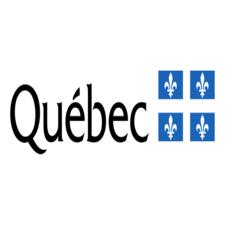Urban heat/freshness islands, temperature differences and urban heat island intensity index 2020-2022
Simple
- Date ( RI_367 )
- 2023-03-06
- Date ( RI_366 )
- 2023-03-06
- Status
- historicalArchive; archiveHistorique RI_594
- Maintenance and update frequency
- notPlanned; nonPlanifié RI_542
- Keywords ( RI_528 )
-
- Layout
- Tree
- Cartography
- Chaleur
- Climate change
- Development
- Environment
- Forest
- Freshness
- Geomatics
- ICFU
- ICU
- Island
- Satellite imagery
- Artificial intelligence
- Landsat-8
- public
- Health
- Diagram
- Temperature
- Remote Sensing
- Urbain
- Government of Canada Core Subject Thesaurus Thésaurus des sujets de base du gouvernement du Canada ( RI_528 )
-
- Government information
- Use limitation
- Creative Commons 4.0 Attribution (CC-BY) licence – Quebec (https://www.donneesquebec.ca/fr/licence/)
- Access constraints
- license; licence RI_606
- Use constraints
- license; licence RI_606
- Spatial representation type
- vector; vecteur RI_635
- Metadata language
- eng; CAN
- Metadata language
- fra; CAN
- Topic category
-
- Geoscientific information
- Begin date
- 2020-01-01
- End date
- 2022-12-31
))
- Reference system identifier
- unknown / unknown / unknown
- Distribution format
-
-
GPKG
(
unknown
)
-
GeoTIF
(
unknown
)
-
HTML
(
unknown
)
-
PDF
(
unknown
)
-
SHP
(
unknown
)
-
XLS
(
unknown
)
-
GPKG
(
unknown
)
- OnLine resource
-
Production metadata
(
HTTPS
)
Dataset;GPKG;fra
- OnLine resource
-
Urban heat and freshness islands 2020-2022 (Temperature difference classes)
(
HTTPS
)
Dataset;GeoTIF;fra
- OnLine resource
-
Temperature difference 2020-2022 in °C
(
HTTPS
)
Dataset;GeoTIF;fra
- OnLine resource
-
Urban heat and freshness islands 2020-2022 (Temperature difference classes)
(
HTTPS
)
Dataset;HTML;fra
- OnLine resource
-
Urban heat and freshness islands 2020-2022 (metadata) (Temperature difference classes)
(
HTTPS
)
Dataset;HTML;fra
- OnLine resource
-
Urban heat islands 2020-2022
(
HTTPS
)
Dataset;HTML;fra
- OnLine resource
-
Urban freshness islands 2020-2022
(
HTTPS
)
Dataset;HTML;fra
- OnLine resource
-
Temperature difference 2020-2022 in °C
(
HTTPS
)
Dataset;HTML;fra
- OnLine resource
-
SUHII Index 2020-2022
(
HTTPS
)
Dataset;HTML;fra
- OnLine resource
-
INSPQ website, Mapping urban heat islands
(
HTTPS
)
Dataset;HTML;fra
- OnLine resource
-
Original metadata (https://www.donneesquebec.ca)
(
HTTPS
)
Dataset;HTML;fra
- OnLine resource
-
Technote - Maps of urban heat and freshness islands: keys to interpreting and using them
(
HTTPS
)
Supporting Document;PDF;fra
- OnLine resource
-
Methodological report
(
HTTPS
)
Supporting Document;PDF;fra
- OnLine resource
-
Article on the ICU ratio index (IRICU - Surface Urban Heat Island Ratio Index (SUHRI))
(
HTTPS
)
Supporting Document;PDF;fra
- OnLine resource
-
The fight against urban heat islands in the MAMH urban plan
(
HTTPS
)
Supporting Document;PDF;fra
- OnLine resource
-
Urban heat and freshness islands 2020-2022 (Temperature difference classes)
(
HTTPS
)
Dataset;SHP;fra
- OnLine resource
-
SUHII index 2013-2014, 2020-2022 and change in the SUHII index between 2020-2022 and 2013-2014 (%)
(
HTTPS
)
Dataset;SHP;fra
- OnLine resource
-
Proposed symbology for representing data
(
HTTPS
)
Dataset;XLS;fra
- File identifier
- 533d0db2-399b-47a6-b397-0e6101e9a3a6 XML
- Metadata language
- eng; CAN
- Character set
- utf8; utf8 RI_458
- Hierarchy level
- dataset; jeuDonnées RI_622
- Date stamp
- 2025-06-17
- Metadata standard name
- North American Profile of ISO 19115:2003 - Geographic information - Metadata
- Metadata standard version
- HNAP ISO:19115 - 2003
Overviews

Spatial extent
))
Provided by

 Arctic SDI catalogue
Arctic SDI catalogue